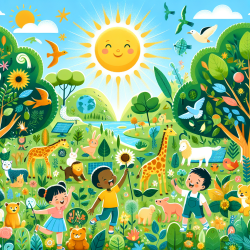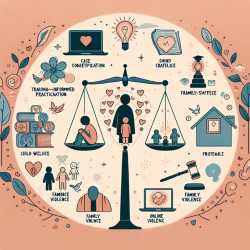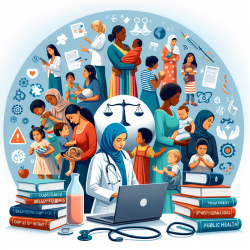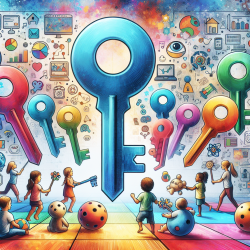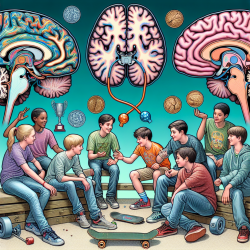Introduction
As practitioners in the field of speech-language pathology, our mission is to foster optimal outcomes for children. While our focus is often on direct interventions, it's crucial to recognize the broader environmental factors that influence children's well-being. A recent research article, "Biodiversity and human well-being: an essential link for sustainable development," highlights the intricate connections between biodiversity and human well-being (HWB). Understanding these connections can enhance our practice and promote sustainable development.
The Link Between Biodiversity and Human Well-being
The research underscores the evolving understanding of biodiversity's role in HWB. Historically seen as an external commodity, biodiversity is now recognized as fundamental to HWB. This shift highlights biodiversity's critical role in ecosystem functions, which provide essential services like clean water, fertile soils, and mental health benefits.
For practitioners, this means acknowledging that the environments children grow up in can significantly impact their development. Biodiverse environments contribute to better air quality, reduced stress, and increased opportunities for play and exploration—all of which are vital for children's cognitive and emotional growth.
Implementing Research Findings in Practice
Here are some practical ways practitioners can incorporate these findings into their work:
- Advocate for Green Spaces: Encourage schools and communities to maintain and enhance green spaces. These areas not only provide a habitat for biodiversity but also serve as natural settings for children to engage in sensory-rich play.
- Integrate Nature into Therapy: Use outdoor settings for therapy sessions when possible. Nature-based therapy can enhance engagement and motivation in children, providing a calming environment that supports learning.
- Educate Families: Share the benefits of biodiversity with families, encouraging them to explore natural environments with their children. This can foster a connection to nature and enhance family well-being.
Encouraging Further Research
While the current research provides a robust framework, there are still knowledge gaps, particularly in the direct links between biodiversity and HWB outcomes in children. Practitioners are encouraged to engage in or support further research in this area. Collaborations with ecologists, educators, and policymakers can lead to more comprehensive studies and innovative solutions.
Conclusion
Integrating biodiversity considerations into our practice is not just about improving individual outcomes; it's about contributing to a sustainable future. By recognizing the essential link between biodiversity and HWB, we can enhance our interventions and advocate for environments that support the holistic development of children.
To read the original research paper, please follow this link: Biodiversity and human well-being: an essential link for sustainable development.
